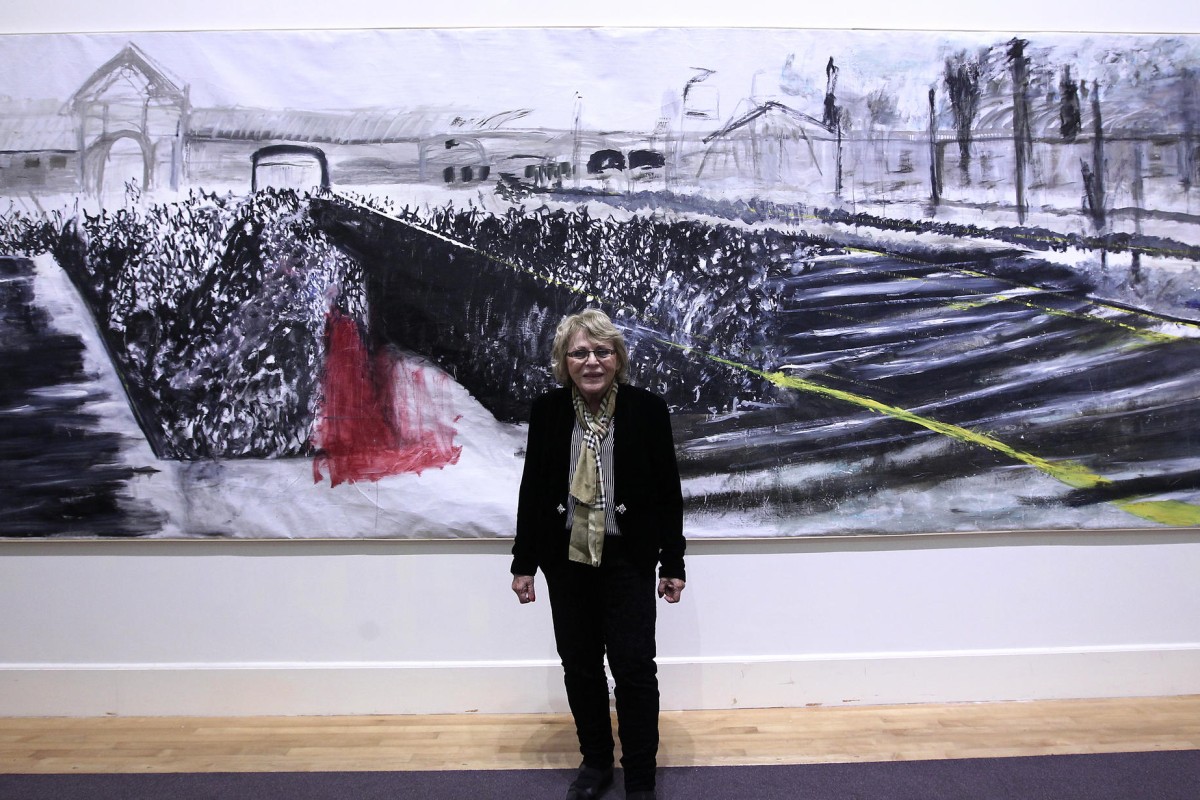 Holocaust survivor, Sara Atzmon, says she decided to express her "anger, despair and pain on canvas".
Holocaust survivor, Sara Atzmon, says she decided to express her "anger, despair and pain on canvas".To this day, Sara Atzmon cannot understand why she and her family, together with hundreds of thousands of Jewish people, were tortured and killed by the Nazis in Germany during the second world war.
"You cannot imagine [what it was like]. I kept asking myself: 'Why did they have to kill us all the time?'" says the Holocaust survivor, 81, who lives in Israel with her family.
Born in 1933 in Hungary, she was only 11 when her family was forced to leave their home.
"It was 1944 when we were taken to the Debrecen ghetto, where the Jews were told to surrender all their valuables to the Gestapo [the Nazi secret police]," says Atzmon, who was in Hong Kong last month for her exhibition, "Surviving Evil: The Pictorial Language of Sara Atzmon", at the University of Hong Kong.
The exhibition, with 27 artworks, depicts her vivid memories of the concentration camps. It's a collaboration between the University of Hong Kong Museum and Art Gallery, the Hong Kong Holocaust and Tolerance Centre, and the Goethe-Institut Hong Kong.
"At the ghetto, they took everything away: our money, jewellery and clothes. They made us wear the Jewish Star of David," Atzmon says.
After that, they were taken to a brick factory, where 40,000 prisoners waited to be transported to Auschwitz. On June 25, Atzmon and 95 other prisoners were sent off in a cattle car. Instead of going to Auschwitz, they ended up in a concentration camp in Strasshof, a suburb of Vienna, Austria.
"We stripped off our clothes to be examined and disinfected. Coming from a religious family, I'd never been naked in front of others or seen naked people," she says.
Not long after, she and her family were sent to a labour camp in Heidenreichstein, where she was forced to work from morning till night for one slice of bread a day.
"Sometimes I looked at the naked people standing, waiting to be executed. I couldn't tell if they were men or women; they were so thin, they looked like skeletons," she says.
Every day, people died of exhaustion, starvation and disease. It was August when her father died next to her. Though devastated, she couldn't allow herself to think.
"I learned to close myself off and hide my feelings; otherwise, I wouldn't have survived."
"In the worst moments, I'd picture an angel watching over me. I've always believed someone would come to rescue me." Her wish has been portrayed in the painting titled Sara and Her Angel.
That "angel" arrived on April 13, 1945, in Farsleben, Germany. American troops found a train from which Nazi soldiers had fled. Sara, aged 12, was on that train. When she was freed, she weighed only 17kg. At first, she didn't feel excited. She hardly felt anything at all.
"It took me a few months to believe I was finally safe," she says. "When I did, I ran out crying and shouting: 'I am free! I am free!'"
In the past 30 years, she has produced more than 100 paintings. "I decided to express my anger, despair and pain on canvas," she says. "I had to take out the poison in me to be stronger."
Atzmon's exhibition at the HKU Museum and Art Gallery runs until May 4. For school tours, call Elena Cheung on 2241 5512
